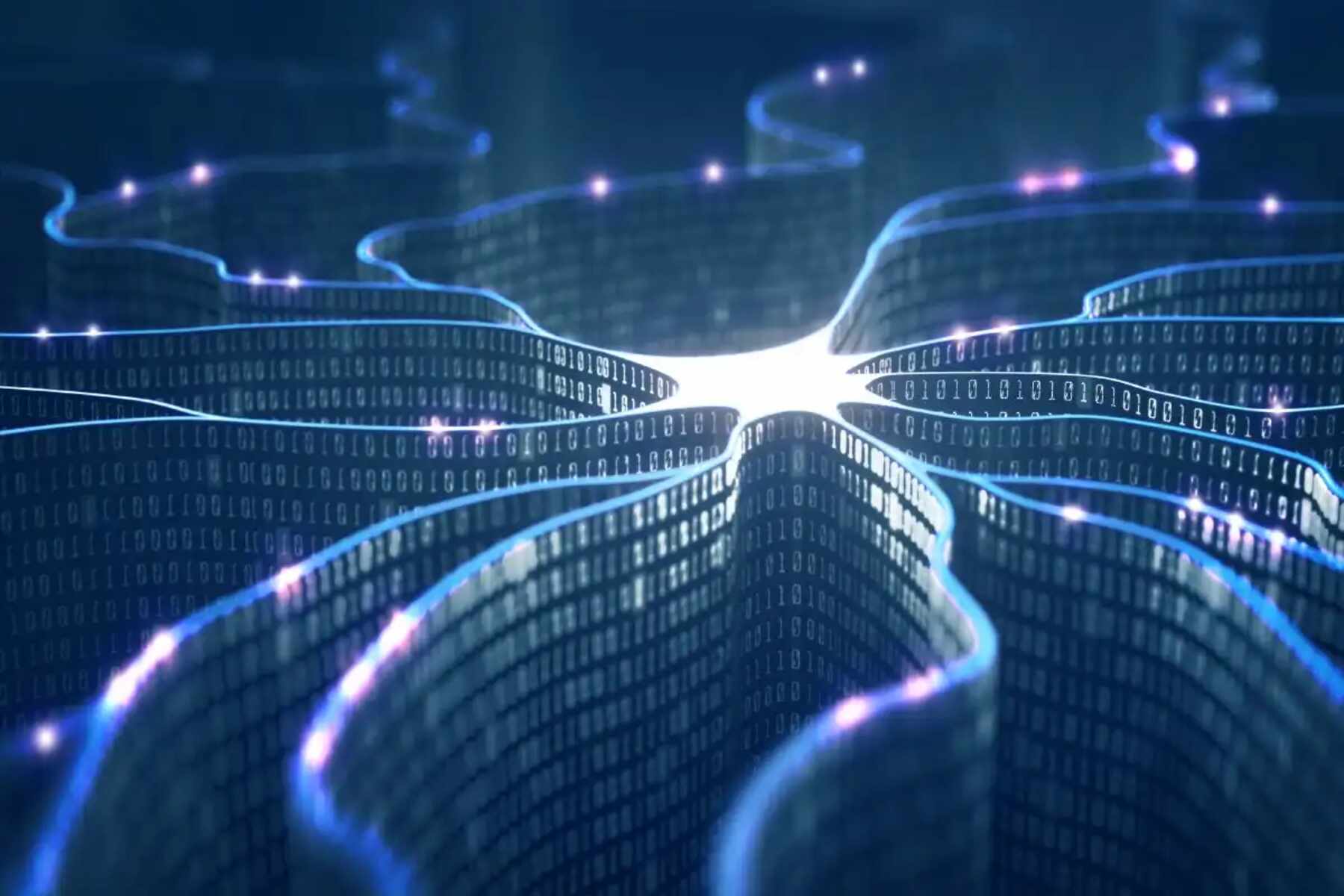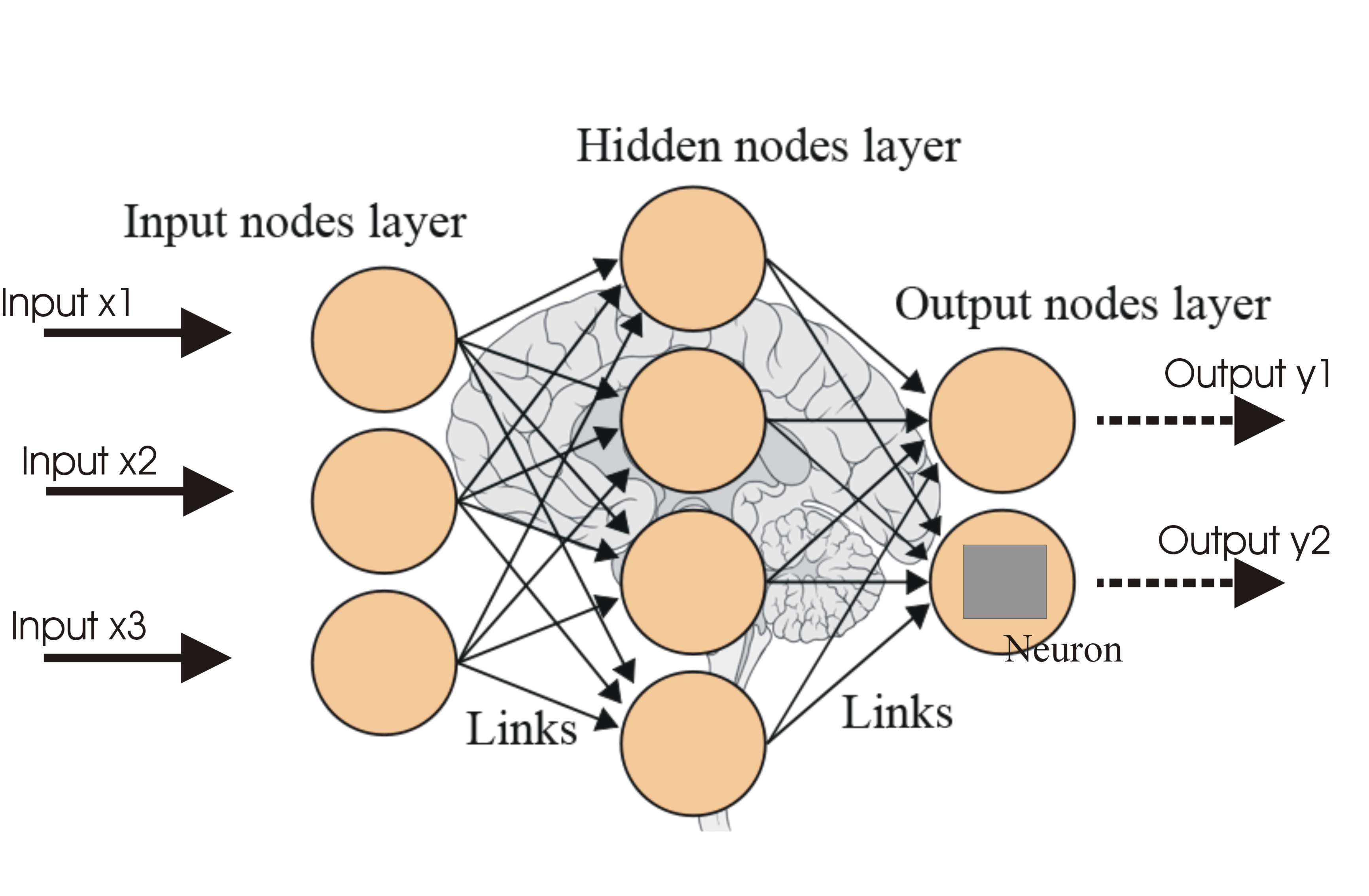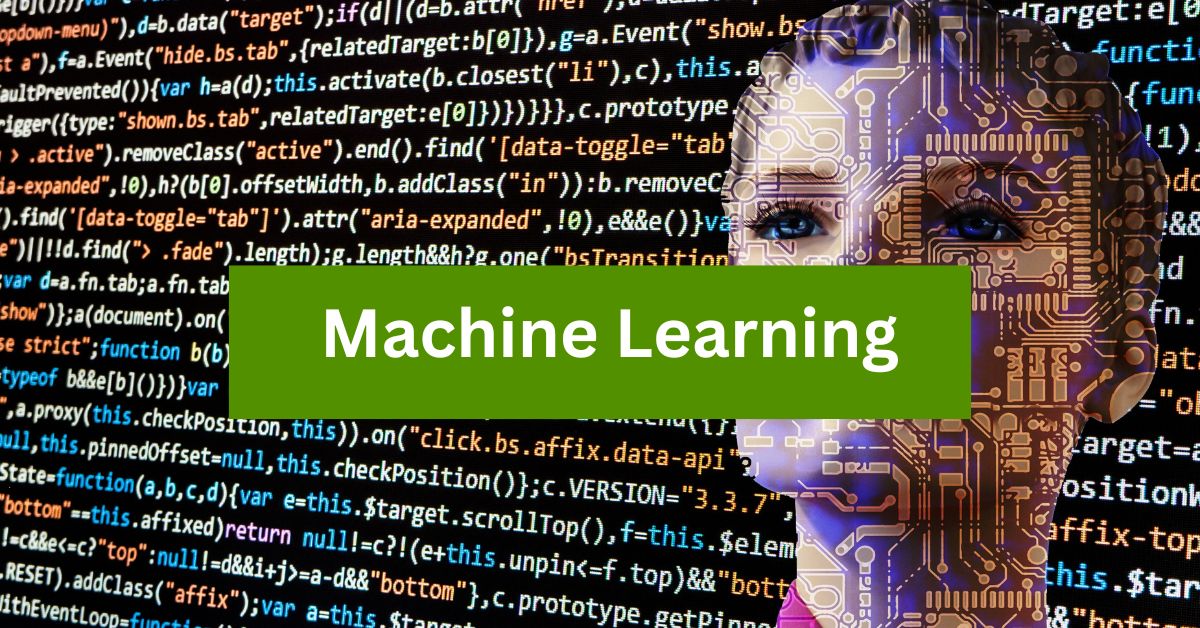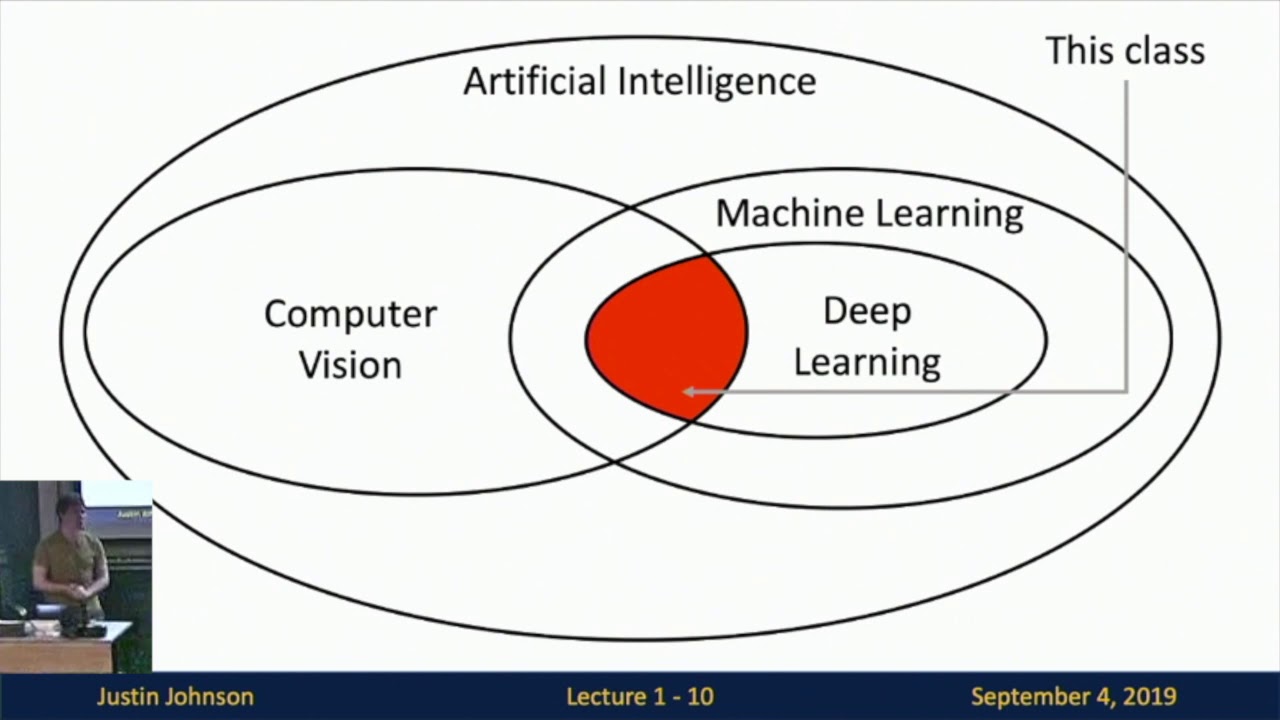Introduction
When it comes to the field of machine learning, one technique that has gained significant attention and revolutionized the way artificial intelligence models are trained is Generative Adversarial Networks (GAN). GAN is a powerful algorithm that has the ability to generate realistic and high-quality synthetic data, which in turn has opened up new avenues for various applications such as image synthesis, data augmentation, and even creating deepfakes.
So, what exactly is GAN? GAN stands for Generative Adversarial Network, which is a framework that consists of two primary components – a generator and a discriminator. These two components work together in a competitive manner where the generator tries to create realistic fake data, while the discriminator tries to distinguish between the real and fake data generated by the generator.
Unlike other machine learning techniques that rely on pre-existing data for training, GAN has the unique ability to generate new and original data that resembles the training set. This characteristic of GAN makes it an ideal choice for applications where large amounts of training data are scarce or difficult to obtain.
GAN has gained immense popularity and recognition in recent years due to its remarkable capabilities and its potential for creating highly realistic synthetic data. The technology behind GAN has been actively researched and developed, leading to continuous improvements and advancements in its performance and applications.
In this article, we will delve deeper into the concept of GAN, explore how it works, and discuss its various components and the training process involved. Additionally, we will also explore the applications of GAN, the advantages it offers, as well as the challenges and limitations that researchers and developers face when working with this powerful machine learning technique.
What is GAN?
Generative Adversarial Networks, commonly known as GAN, is a machine learning framework that utilizes a unique two-network architecture to generate synthetic data that closely resembles the real data. GAN was first proposed by Ian Goodfellow and his colleagues in 2014 and has since become a significant breakthrough in the field of deep learning.
The main idea behind GAN is to train two neural networks simultaneously in a game-like scenario: a generator network and a discriminator network. The generator network generates synthetic data samples, such as images or text, while the discriminator network learns to distinguish between the real and generated data. The two networks are constantly competing with each other, hence the term “adversarial.”
The generator network takes a random input, typically a vector of numbers sampled from a probability distribution, and transforms it into a data sample that resembles real data. The generated samples are then fed into the discriminator network, which provides feedback on how realistic the generated samples are. The discriminator’s objective is to correctly classify the data as either real or fake.
During the training process, the generator network tries to improve its ability to produce samples that fool the discriminator, while the discriminator network tries to enhance its ability to differentiate between real and fake samples. This adversarial competition pushes both networks to improve their performance iteratively.
Over time, the generator network gets better at producing more realistic samples that are increasingly difficult for the discriminator network to differentiate from the real data. Ultimately, the aim is for the generator to produce synthetic data that is indistinguishable from the real data.
The power of GAN lies in its ability to learn the underlying distribution of the real data by training the generator and discriminator networks together. This allows GAN to generate new samples that resemble the original data distribution, thereby enabling the creation of realistic and high-quality synthetic data.
GAN has shown great potential in a wide range of applications. It has been extensively used in generating realistic images, creating video game characters, synthesizing voices, and even generating music. With its ability to generate new and original data, GAN has opened up innovative possibilities in various industries such as entertainment, healthcare, and design.
How does GAN work?
Generative Adversarial Networks (GAN) operate on the principle of a two-player adversarial game. The game is played between two neural networks – the generator and the discriminator – in a constant and iterative competition.
The generator’s role is to produce synthetic data samples that resemble the real data. It takes a random noise vector as input and transforms it into a data sample within the target data distribution. The goal of the generator is to generate increasingly realistic samples that can fool the discriminator.
The discriminator, on the other hand, aims to identify and distinguish between real and fake data samples. It receives both real data from the training set and the synthetic data generated by the generator. The discriminator learns to classify the samples as either real or fake, improving its ability over time.
The training process involves iterations of the following steps:
- The generator produces a batch of synthetic data samples based on random noise as input.
- The discriminator is trained on a mix of real data samples from the training set and the synthetic data samples generated by the generator. It learns to classify the samples correctly.
- The generator is then updated based on the feedback from the discriminator. It aims to optimize its generation process and improve the quality of the generated samples.
The competition between the generator and the discriminator continues as they both aim to outsmart each other. As the training progresses, the generator becomes more skilled at creating realistic samples, while the discriminator becomes more accurate in discriminating between real and fake data.
The process is an example of a minimax game, where the generator and discriminator each have their own loss functions and update their parameters accordingly. The generator wants to minimize the discriminator’s ability to discriminate, while the discriminator wants to maximize its accuracy in distinguishing between real and fake data.
The training of GANs can be challenging, as finding the right balance between the generator and discriminator is crucial. If the discriminator becomes too powerful, it can easily reject all generated samples as fake. On the other hand, if the generator becomes too good at fooling the discriminator, it might start generating samples that deviate too much from the target distribution.
This constant interplay between the generator and discriminator is what drives the GAN forward, gradually improving the quality of the generated samples. Through this iterative process, GANs have the ability to create astonishingly realistic synthetic data that closely resembles the real data distribution.
Components of GAN
A Generative Adversarial Network (GAN) consists of several key components that work together in a competitive and collaborative manner to generate realistic synthetic data:
1. Generator: The generator is the primary component responsible for generating synthetic data. It takes a random noise vector as input and maps it to the space of the target data distribution. The generator forms the core of the GAN architecture, and its purpose is to learn how to transform the noise input into realistic data samples that resemble the real data.
2. Discriminator: The discriminator is the counterpart of the generator. Its objective is to distinguish between the real data samples and the synthetic data samples generated by the generator. The discriminator is a classifier that assigns a probability score to each sample, indicating the likelihood of it being real or fake. The discriminator’s job is to become increasingly accurate in discriminating between real and fake data.
3. Loss Function: The loss function is a crucial component that measures the performance of both the generator and the discriminator. It quantifies the discrepancy between the generated samples and the real data, allowing the networks to optimize their parameters accordingly. The loss function is often based on binary cross-entropy, where the generator aims to minimize the discriminator’s ability to classify the samples correctly, while the discriminator aims to maximize its accuracy.
4. Training Data: GANs require a training dataset consisting of real data samples. The quality and diversity of the training data greatly influence the performance and realism of the generated samples. The generator learns from this training data and tries to generate new samples that resemble the characteristics of the real data.
5. Noise Vector: GANs utilize a random noise vector as input to the generator. This noise vector acts as a source of randomness and helps generate diverse samples. By manipulating the noise input, the generator can produce different variations of synthetic data samples that still adhere to the overall target distribution.
6. Optimization Algorithm: GANs employ an optimization algorithm, such as stochastic gradient descent (SGD) or Adam, to update the parameters of the generator and discriminator during training. The optimization algorithm seeks to minimize the loss function and improve the performance of both networks.
These components work together in a competitive and iterative process. The generator tries to produce synthetic data that fools the discriminator, while the discriminator aims to accurately distinguish between real and synthetic samples. Through this continuous iteration and learning, GANs gradually improve the quality of the generated samples, converging towards a state where the generated data is indistinguishable from the real data.
Generator
The generator is a crucial component of a Generative Adversarial Network (GAN), responsible for creating synthetic data that closely resembles the real data. The main objective of the generator is to learn the underlying distribution of the training data and generate new samples from that distribution.
The generator takes a random noise vector as input and passes it through a neural network architecture. This architecture transforms the noise input into a synthetic data sample, such as an image, text, or any other type of data. The goal is to generate samples that are indistinguishable from the real data, in terms of both their appearance and statistical properties.
During the training process, the generator aims to optimize its parameters so that the generated samples become increasingly realistic. The generator network consists of multiple layers, typically including convolutional layers in the case of image data. These layers allow the network to learn hierarchical features and capture the complex patterns present in the training data.
The generator operates in a feedforward manner. It takes the input noise vector and applies a series of mathematical operations and transformations to produce the synthetic data sample. The output of the generator is a data sample that closely resembles the real data but is not an exact replica.
The generator’s output is then evaluated by the discriminator, which assesses the authenticity and realism of the generated sample. Based on the feedback from the discriminator, the generator adjusts its parameters to improve the quality of the generated samples. Over time, the generator becomes more proficient at producing realistic samples that are increasingly difficult for the discriminator to distinguish from the real data.
One key challenge in training the generator is finding the right balance between generating diverse samples and adhering to the target distribution. If the generator becomes too focused on reproducing the training data exactly, it may produce samples that lack diversity and creativity. On the other hand, if the generator becomes too creative and deviates too much from the target distribution, it may generate unrealistic samples.
In order to control the output of the generator and encourage diversity, various techniques can be employed. For example, injecting noise into different layers of the generator network or using techniques like conditional GANs, which condition the generator on additional input information, can lead to more diverse and controllable synthetic samples.
The generator is a key element in the GAN architecture, playing a critical role in creating new and original data that resembles the training data. Through iterative training and competition with the discriminator, the generator gradually improves its ability to generate highly realistic and visually appealing synthetic data.
Discriminator
The discriminator is an integral part of a Generative Adversarial Network (GAN), working in opposition to the generator. Its primary role is to distinguish between real and synthetic data samples generated by the generator. The discriminator acts as a classifier, determining the authenticity and realism of the samples it evaluates.
The discriminator takes both real data samples from the training set and synthetic data samples generated by the generator as input. Its objective is to learn the characteristics and patterns that differentiate real data from the generated data. To achieve this, the discriminator is trained using supervised learning, where it is provided with the correct labels (real or fake) for each sample it evaluates.
The discriminator network typically consists of multiple layers, such as convolutional layers in the case of image data. These layers allow the network to extract meaningful features from the input samples and learn to discriminate between the different classes. The output of the discriminator is a probability score indicating the likelihood of the sample being real or fake.
During the training process, the discriminator learns to improve its classification accuracy. It aims to correctly identify the real data samples as real and the generated samples as fake. The loss function for the discriminator is typically based on binary cross-entropy, where it seeks to minimize the error between its predicted probabilities and the true labels.
As the training progresses, the generator becomes more adept at creating realistic samples, making it increasingly challenging for the discriminator to correctly classify between real and fake data. This forces the discriminator to continuously adapt and improve its discrimination capabilities.
The discriminator’s feedback plays a crucial role for the generator’s training. The generator aims to generate synthetic samples that can fool the discriminator, making them indistinguishable from the real data. By receiving feedback from the discriminator, the generator adjusts its parameters to produce more realistic and convincing samples in the subsequent iterations.
The discriminator also aids in preventing mode collapse, a situation where the generator produces a limited range of samples that fool the discriminator but lack diversity. Through the discriminator’s feedback, the generator is encouraged to explore and generate a wider range of samples, covering the entire target distribution.
In recent advancements, more complex discriminator architectures and techniques have been developed to enhance the discrimination ability. This includes the use of deep convolutional networks, as well as the incorporation of auxiliary classifiers for semi-supervised algorithms.
Overall, the discriminator plays a critical role in the GAN architecture by providing feedback to the generator and guiding its learning process. Through continuous competition with the generator, the discriminator strives to improve its ability to differentiate between real and synthetic data, ultimately driving the GAN to generate high-quality and convincing synthetic samples.
Loss function
In a Generative Adversarial Network (GAN), the loss function serves as a crucial component to measure the performance of both the generator and the discriminator. The loss function quantifies the discrepancy between the real data and the synthetic data generated by the generator, helping to optimize the parameters of both networks.
The loss function in a GAN is typically based on binary cross-entropy. It measures the difference between the predicted probability of a sample being real or fake and the actual label assigned to that sample. The generator network aims to minimize this loss, while the discriminator network aims to maximize it.
For the discriminator, the loss function is calculated by comparing the predictions made by the discriminator for both real and fake samples to their corresponding true labels. The objective of the discriminator is to minimize this loss, ensuring that it accurately classifies the samples as real or fake.
On the other hand, the generator’s loss function is calculated using the discriminator’s predictions for the synthetic samples. The generator seeks to minimize this loss by generating samples that fool the discriminator, making them appear as close to real data as possible.
The adversarial nature of the GAN framework is reflected in the loss function formulation. As the discriminator aims to minimize the loss, it tries to become better at discriminating between real and fake samples. Simultaneously, the generator aims to minimize the same loss, attempting to generate samples that deceive the discriminator.
This adversarial competition drives the optimization process of the GAN. The generator and discriminator are trained in a dynamic balance, continuously improving their respective abilities in generating realistic data and distinguishing between real and fake data.
While the primary loss function in GANs is the binary cross-entropy, variations and modifications have been proposed to enhance training stability and mitigate mode collapse, a situation where the generator produces a limited range of samples. These variations include the use of feature matching, where the discriminator’s intermediate features are used in the loss calculation, and minimizing the Jensen-Shannon divergence.
Additionally, for specific applications, customized loss functions can be employed to address specific requirements. For instance, in image synthesis tasks, pixel-wise loss functions like mean squared error (MSE) or perceptual loss based on feature similarity can be employed to ensure high-fidelity sample generation.
Overall, the loss function is a fundamental aspect of GANs, shaping the optimization process and guiding the learning of both the generator and the discriminator. Through continuous iteration and improvement, the goal of the loss function is to converge towards a state where the synthetic data produced by the generator closely resembles the real data from the training set.
Training GAN
Training a Generative Adversarial Network (GAN) involves simultaneously training the generator and discriminator networks in an iterative manner. The training process aims to optimize the parameters of both networks to improve the quality of the generated samples and enhance the discrimination capability of the discriminator.
The training procedure for a GAN typically follows these steps:
1. Initialization: The generator and discriminator networks are initialized with random weights.
2. Data Preparation: A dataset of real data samples is prepared for training, typically representing the target distribution that the generator should mimic.
3. Adversarial Training: In each iteration, a batch of real data samples is randomly selected from the dataset. Additionally, a batch of noise vectors is generated as input to the generator. Based on this input, the generator produces a batch of synthetic data samples.
4. Discriminator Training: The discriminator is then trained using a combination of real and generated data samples. The objective is to minimize the discriminator’s loss by accurately classifying the samples as real or fake.
5. Generator Training: The generator is trained based on the feedback from the discriminator. The generator aims to generate samples that deceive the discriminator, thereby minimizing the generator’s loss.
6. Optimization: The parameters of both the generator and the discriminator are updated using an optimization algorithm such as stochastic gradient descent (SGD) or Adam. The objective is to minimize the loss functions of both networks.
7. Repeat Steps 3-6: The adversarial training process continues for a fixed number of iterations or until a convergence criteria is met. The generator and discriminator networks are updated iteratively, improving their performance in each iteration.
Throughout the training process, the generator and discriminator networks compete with each other in a game-like scenario. The generator strives to produce more realistic samples that can deceive the discriminator, while the discriminator aims to improve its discrimination ability and correctly classify the real and generated data.
Training GANs can be challenging due to several factors. Achieving a stable training process and striking the right balance between the two networks can be difficult. The optimization process requires careful tuning and monitoring to avoid issues such as mode collapse or training instability.
Regularization techniques, such as weight clipping or gradient penalty, can be employed to ensure stable training. Monitoring the loss curves and sample quality at each iteration is crucial to assess the progress and make necessary adjustments to the training process.
Training a GAN often requires substantial computational resources and time, as the networks need to iterate over many batches of data to converge to a satisfactory solution. However, with careful training supervision and proper experimentation, GANs can produce impressive results and generate synthetic data that closely resembles the real data distribution.
Applications of GAN
Generative Adversarial Networks (GANs) have found versatile applications across numerous domains, revolutionizing the way we generate and manipulate data. Some of the prominent applications of GAN include:
1. Image Synthesis: GANs have demonstrated remarkable capabilities in generating realistic and high-resolution images. They can create synthetic images that resemble real photographs, enabling applications in computer graphics, virtual reality, and even artwork generation. GANs have also been used in image-to-image translation tasks, such as transforming sketches into photorealistic images or converting images from one artistic style to another.
2. Data Augmentation: GANs offer a powerful approach for data augmentation. By generating additional synthetic data samples, GANs can enhance the diversity and size of a dataset, facilitating better generalization and performance of machine learning models. This is particularly beneficial when the availability of real training data is limited or when the dataset requires augmentation for better representation.
3. Image Editing and Manipulation: GANs enable advanced image editing and manipulation techniques, allowing users to modify and transform images in various ways. This includes tasks like image inpainting, where damaged or missing parts of an image are filled in seamlessly, or style transfer, which applies the style of one image to another. GANs have also been used to create deepfakes, where faces are replaced or manipulated in videos.
4. Medical Imaging and Diagnosis: GANs have shown promise in medical imaging applications. They can generate synthetic medical images that closely resemble real patient scans, helping in the augmentation of medical datasets and aiding in the development of diagnostic models. GANs can also be used for image super-resolution, enhancing the quality and resolution of medical images.
5. Video Synthesis: GANs are not limited to generating static images; they can also generate realistic videos. GANs have been used to generate video frames, predict future frames, and even synthesize entirely new video sequences. These applications have potential uses in video editing, special effects in the film industry, and content generation for virtual reality and gaming.
6. Natural Language Generation: GANs can be applied to generate natural language texts, such as paragraphs, stories, or even dialogue. GANs have the ability to model and capture the underlying language distribution, enabling the generation of coherent and contextually relevant text. This has applications in chatbots, automatic text generation, and content creation.
7. Fashion and Design: GANs have been employed in the fashion industry for generating new clothing designs, creating virtual fashion models, and assisting in product recommendation systems. GANs have the potential to help designers explore new and innovative designs, reduce time-to-market, and improve personalization in the fashion industry.
These are just a few examples of the wide-ranging applications of GANs. The versatility and creativity enabled by GAN technology continue to inspire innovation and drive the development of new applications in various fields.
Advantages of GAN
Generative Adversarial Networks (GAN) offer several key advantages that have contributed to their popularity and widespread use in the field of machine learning:
1. Data Generation: GANs have the unique ability to generate new and original data that closely resembles the real data used for training. This is particularly useful when the availability of large and diverse training data is limited. GANs enable the generation of synthetic data samples that can augment existing datasets and improve the performance of machine learning models.
2. Realism and Quality: GANs excel in generating high-quality and realistic synthetic data. The generated samples exhibit intricate details, patterns, and variability that resemble the characteristics of the authentic training data. GANs have been particularly successful in generating images that are visually convincing and difficult to distinguish from real photographs, enabling applications in computer graphics, virtual reality, and creative design.
3. Unsupervised Learning: GANs operate in an unsupervised learning framework, which means they do not require labeled data during the training process. Unlike other machine learning methods that rely heavily on labeled data for supervised learning, GANs can learn from unlabeled data and capture the underlying distribution of the training data. This allows GANs to be highly flexible and adaptable in various applications.
4. Creativity and Innovation: GANs foster creativity and innovation by generating novel and imaginative data samples. They have been extensively used in fields like art, fashion, and design to explore new possibilities, generate unique content, and offer diverse options. GANs provide the opportunity for designers, artists, and creators to imagine and produce in ways that were previously unattainable, opening up new frontiers for innovation and creative expression.
5. Data Privacy and Security: GANs offer a valuable advantage in scenarios where privacy and security of data are paramount. Instead of using real data samples, GANs can generate synthetic data that closely resembles the original dataset without exposing sensitive information. This is particularly relevant in healthcare applications where privacy regulations pose restrictions on the sharing of patient data.
6. Transfer Learning and Pretraining: GANs have been leveraged for transfer learning and pretraining tasks. By training a GAN on a large dataset from one domain, the generator network can capture the distribution and learn useful representations of the data. The pretrained generator can then be repurposed and fine-tuned for related tasks with limited data, enabling efficient and effective transfer of knowledge.
7. Exploration of Unknown Data Space: GANs can generate samples that are not present in the original training data. By sampling from the noise vector input, GANs allow exploration of the latent space and generation of data samples that go beyond the boundaries of the observed data. This has implications for creative design, novelty detection, and generation of new ideas.
These advantages highlight the versatility and power of GANs in various applications. The ability to generate realistic data, work with unlabeled data, and foster creativity make GANs an invaluable tool in the field of machine learning and artificial intelligence.
Challenges and Limitations of GAN
While Generative Adversarial Networks (GAN) are powerful and versatile, they also face several challenges and limitations that researchers and developers need to navigate:
1. Training Instability: GAN training can be unstable and sensitive to hyperparameter settings. The generator and discriminator networks can easily get stuck in suboptimal solutions or fail to converge. Finding the right balance between the two networks and ensuring stable training can be a challenge, requiring careful tuning and experimentation.
2. Mode Collapse: Mode collapse occurs when the generator produces a limited range of similar samples, failing to explore the entire target distribution. In such cases, the generator may generate repetitive or low-diversity samples that are visually convincing but lack creativity. Techniques like regularization and architecture modifications aim to mitigate this limitation.
3. Evaluation Metric: Assessing the performance and quality of GANs remains a challenge. Traditional evaluation metrics, such as accuracy or loss, may not capture the true fidelity, diversity, or perceptual quality of the generated samples. Developing reliable and comprehensive evaluation metrics that align with human perception is an ongoing area of research.
4. Data Dependency: GANs require a significant amount of diverse and high-quality training data to learn the underlying distribution. Insufficient or biased training data can lead to poor sample generation or biased outcomes. Acquiring and curating large-scale datasets can be time-consuming, expensive, and challenging, especially in domains with limited data availability.
5. Hyperparameter Sensitivity: GANs are sensitive to the choice of hyperparameters, such as learning rate, optimization algorithm, and network architectures. Small changes in hyperparameter values can have a significant impact on training stability, convergence, and sample quality. Careful and systematic hyperparameter tuning is necessary to achieve optimal results.
6. Mode Dropping: In some cases, GANs may fail to generate samples corresponding to specific modes or regions of the target distribution. Certain data modes or patterns may not be adequately captured during training, resulting in the omission of those aspects in the generated samples. Addressing mode dropping is an ongoing research area in GAN development.
7. Computational Resources: Training GANs can demand substantial computational resources, including high-performance GPUs and significant memory capacity. Larger-scale GAN models and complex architectures may require even more computational power, limiting their accessibility and affordability for some researchers and developers.
8. Lack of Interpretability: GANs are often treated as black-box models, lacking interpretability and explainability. Understanding the learned latent space, discovering the factors that influence generation, and explaining the decision-making processes of GANs remain challenging areas of research.
Despite these challenges and limitations, advancements in GANs continue to address these issues and make significant progress. Researchers are actively working on developing new techniques and algorithms to enhance stability, diversity, and interpretability, making GANs more effective and reliable for a wider range of applications.
Conclusion
Generative Adversarial Networks (GAN) have emerged as a remarkable breakthrough in the field of machine learning, offering the ability to generate high-quality, realistic synthetic data that closely resembles the real data distribution. GANs have found applications in various domains, including image synthesis, data augmentation, image editing, and even medical imaging.
Despite the challenges and limitations they face, GANs continue to drive innovation and push the boundaries of what is possible in data generation and manipulation. The competition between the generator and discriminator networks, along with their iterative training process, allows GANs to continuously improve the quality of the generated samples over time.
Advantages such as data generation, realism, unsupervised learning, and the ability to explore latent spaces make GANs an invaluable tool in numerous applications. They enable data augmentation, preserve privacy, foster creativity, and enhance transfer learning capabilities.
However, GANs also face challenges in terms of training stability, mode collapse, and hyperparameter sensitivity. Evaluating their performance and generating diverse samples remains an active area of research. Additionally, GANs require extensive computational resources and demand large and diverse datasets for effective training.
Despite these challenges, GANs are continuously evolving, and researchers are actively working to overcome limitations and develop more robust and capable models. As the field progresses, advancements in GAN architecture, training techniques, and evaluation metrics will contribute to their widespread use and refinement.
In conclusion, GANs have revolutionized the field of machine learning by introducing a powerful framework for data generation and manipulation. With their unique ability to create realistic synthetic data, GANs have the potential to impact a wide range of industries and applications, fueling innovation and opening new possibilities for artificial intelligence and data-driven technologies.

























